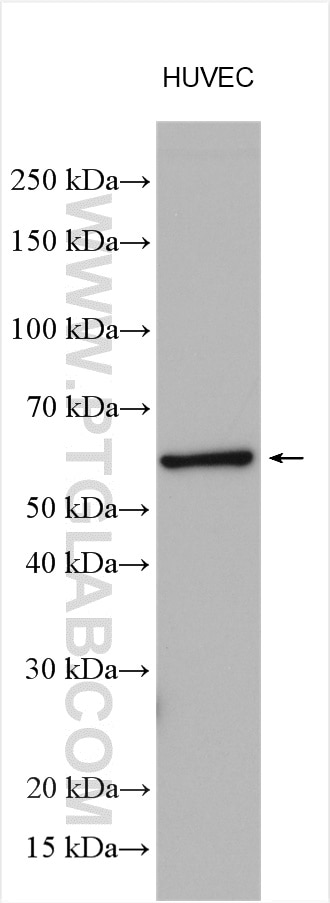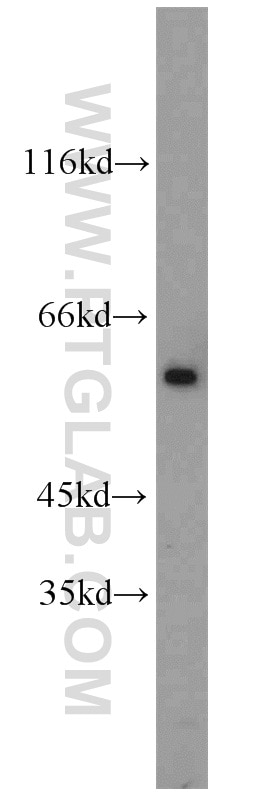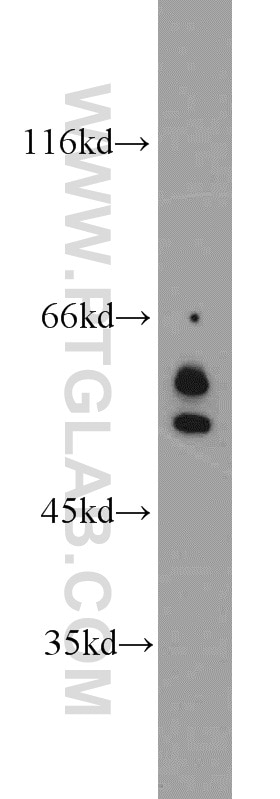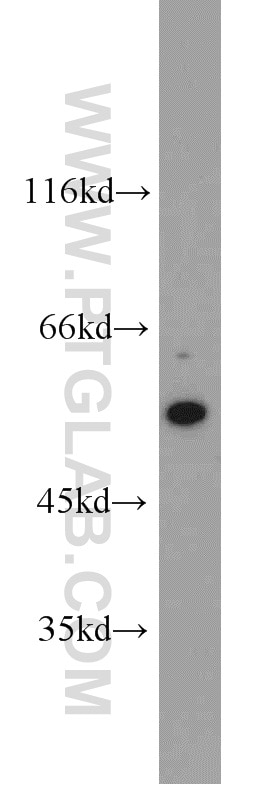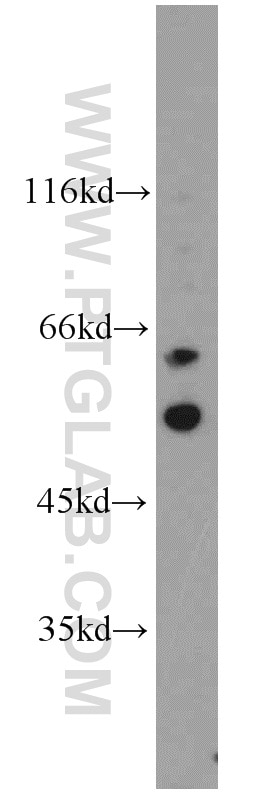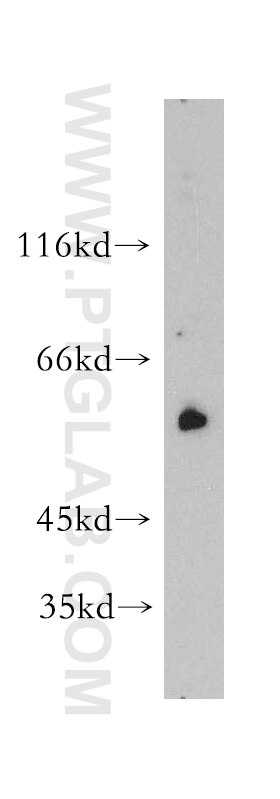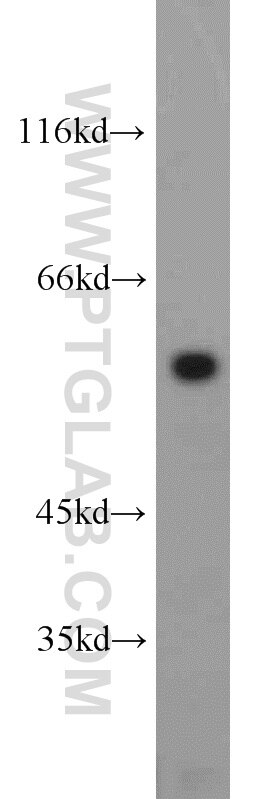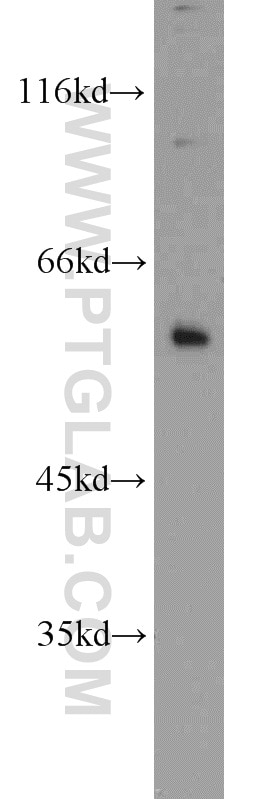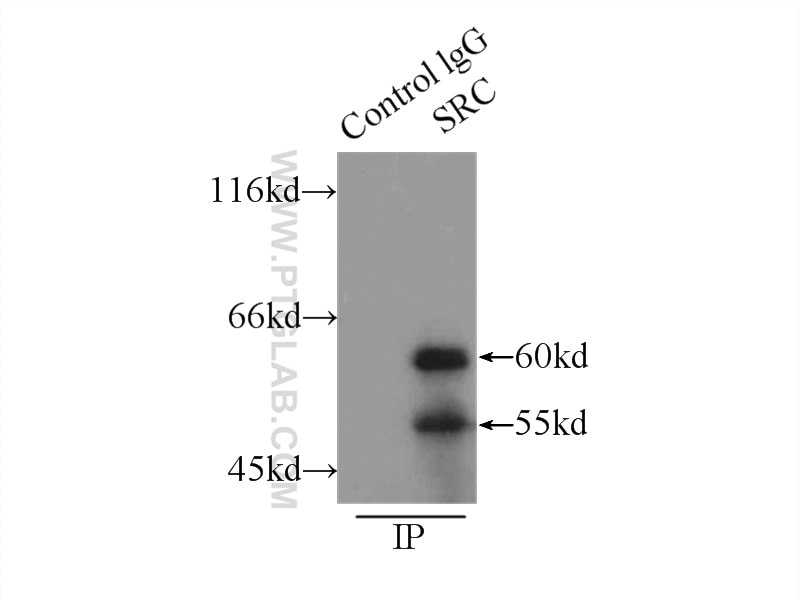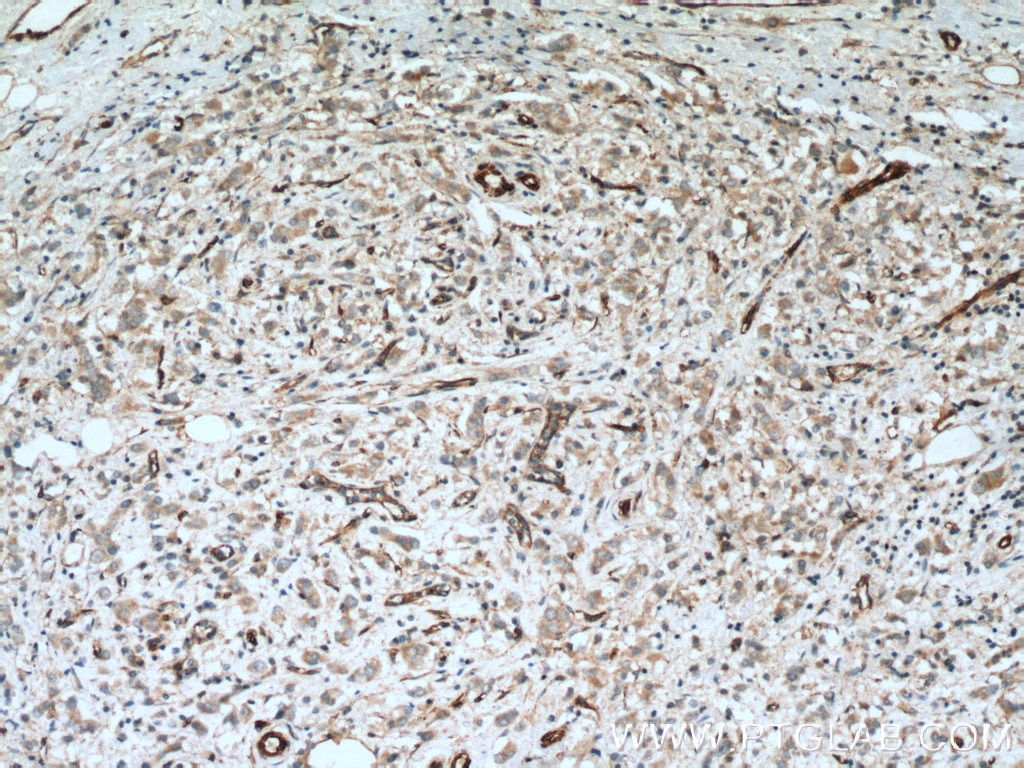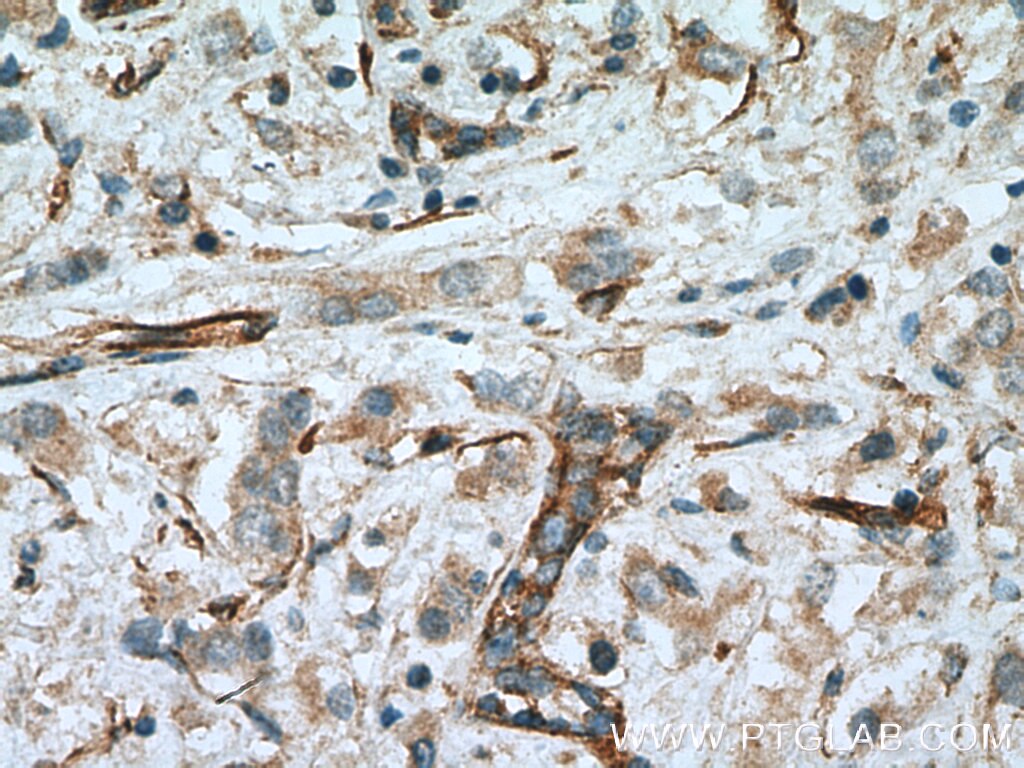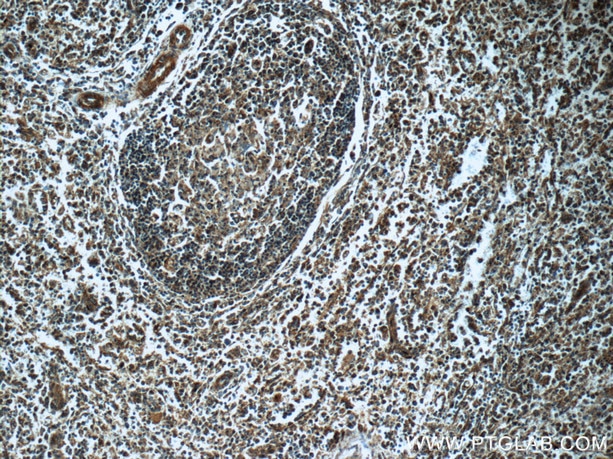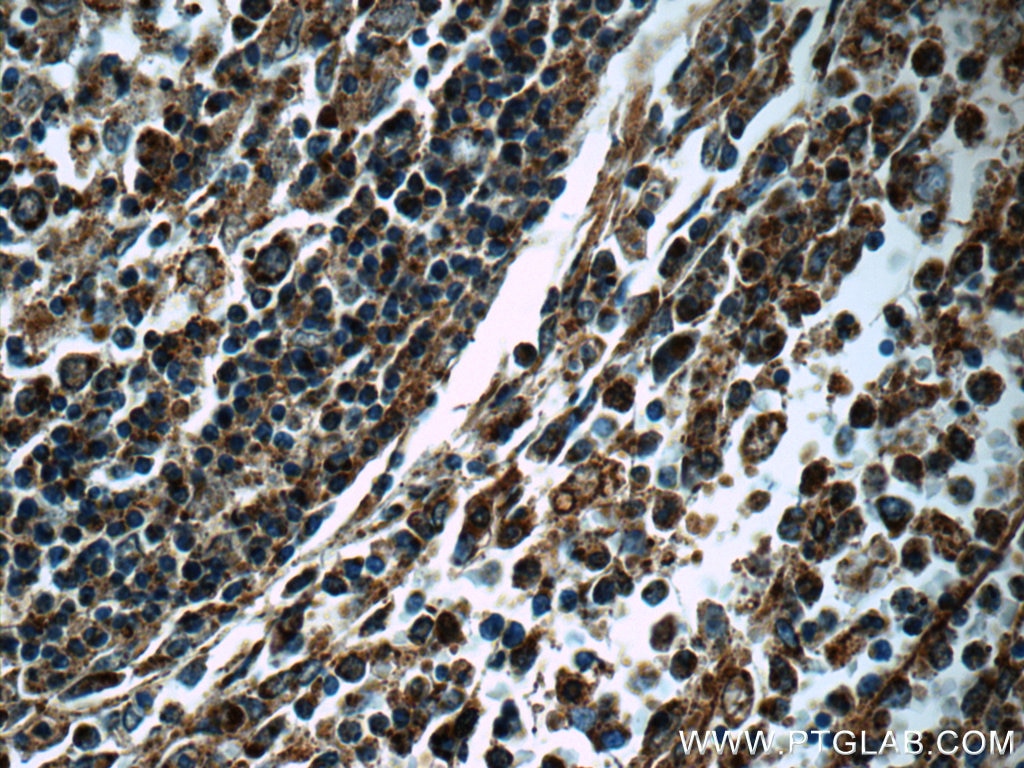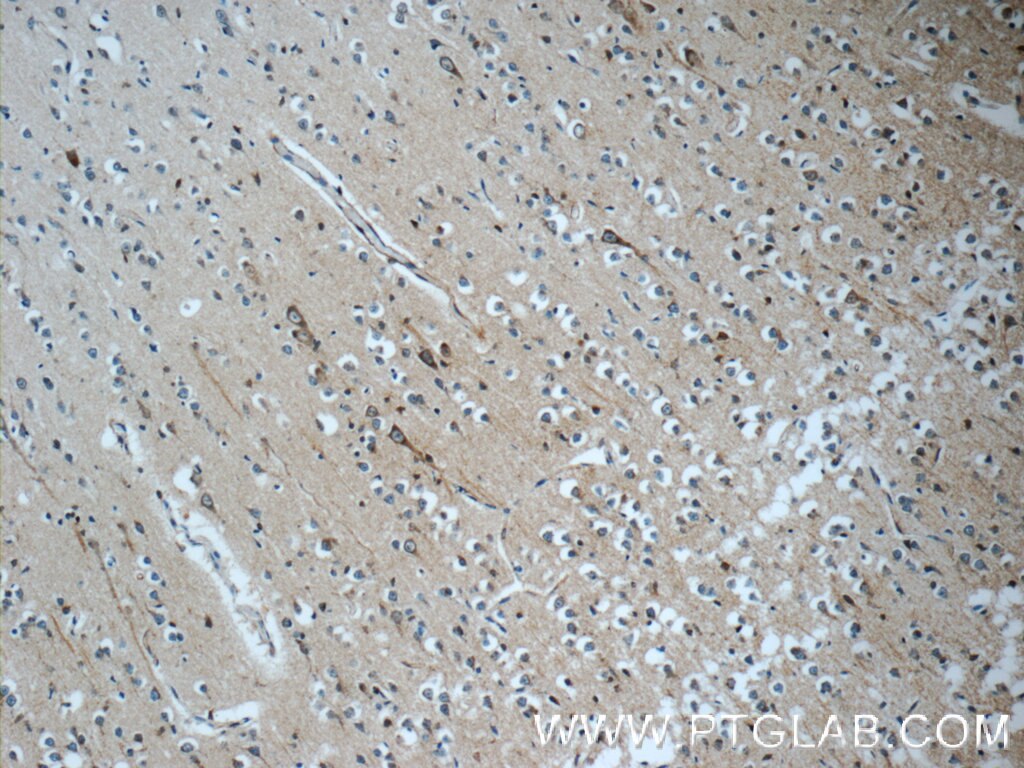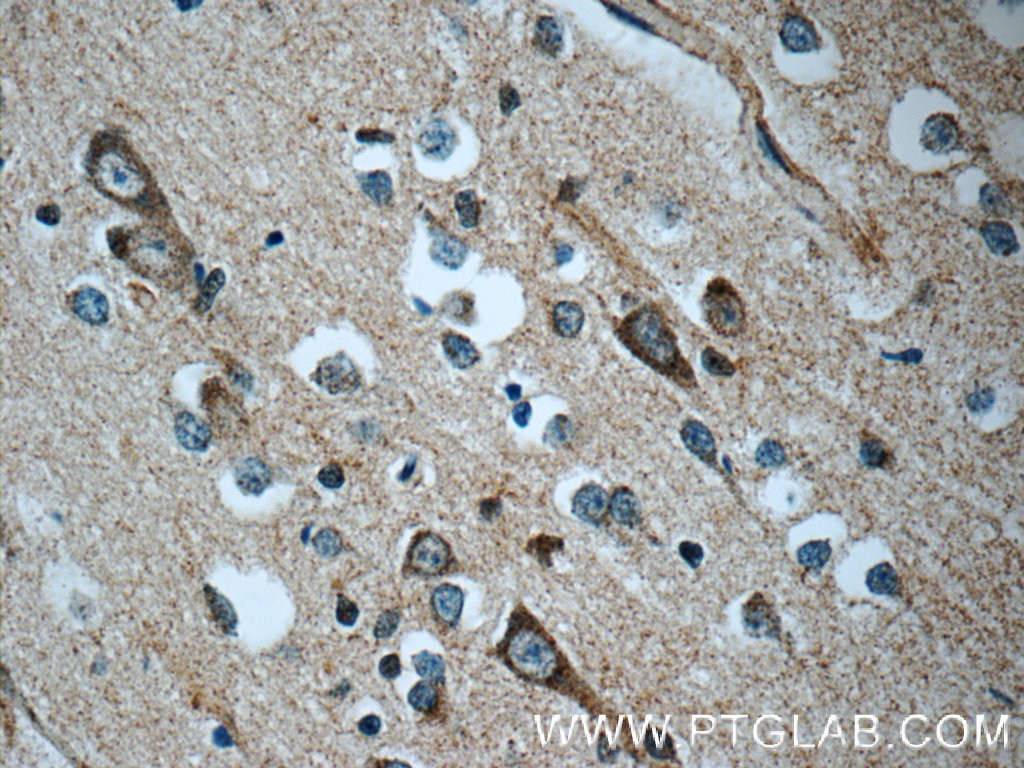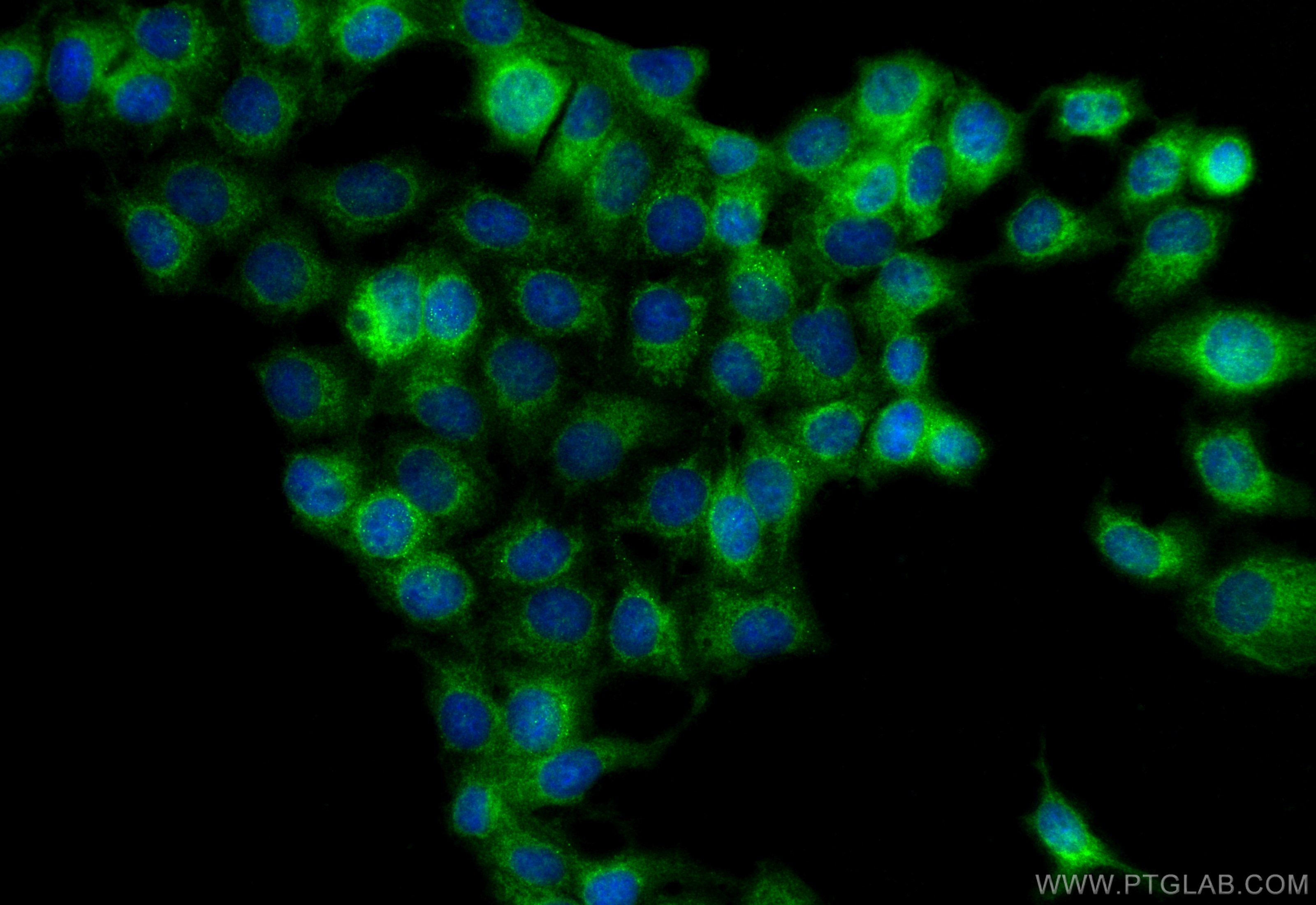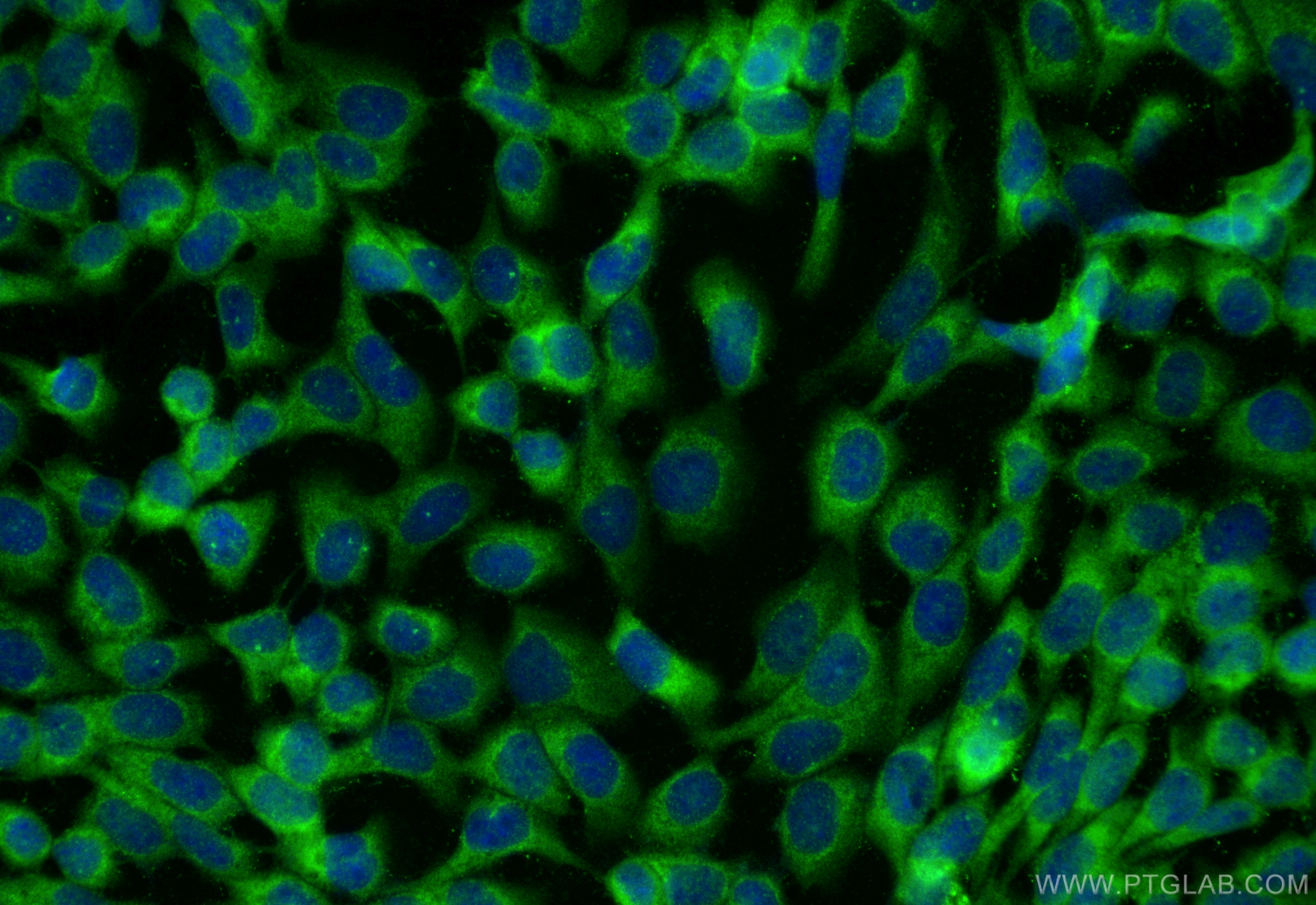c-SRC Polyklonaler Antikörper
c-SRC Polyklonal Antikörper für WB, IHC, IF/ICC, IP, ELISA
Wirt / Isotyp
Kaninchen / IgG
Getestete Reaktivität
hamster, human, Maus, Ratte
Anwendung
WB, IHC, IF/ICC, IP, CoIP, ELISA
Konjugation
Unkonjugiert
Kat-Nr. : 11097-1-AP
Synonyme
Geprüfte Anwendungen
| Erfolgreiche Detektion in WB | HUVEC-Zellen, A431-Zellen, CHO-Zellen, COLO 320-Zellen, Jurkat-Zellen, Maushirngewebe, SH-SY5Y-Zellen |
| Erfolgreiche IP | SH-SY5Y-Zellen |
| Erfolgreiche Detektion in IHC | humanes Mammakarzinomgewebe, humanes Hirngewebe, humanes Milzgewebe Hinweis: Antigendemaskierung mit TE-Puffer pH 9,0 empfohlen. (*) Wahlweise kann die Antigendemaskierung auch mit Citratpuffer pH 6,0 erfolgen. |
| Erfolgreiche Detektion in IF/ICC | A431-Zellen, MCF-7-Zellen |
Empfohlene Verdünnung
| Anwendung | Verdünnung |
|---|---|
| Western Blot (WB) | WB : 1:500-1:3000 |
| Immunpräzipitation (IP) | IP : 0.5-4.0 ug for 1.0-3.0 mg of total protein lysate |
| Immunhistochemie (IHC) | IHC : 1:100-1:400 |
| Immunfluoreszenz (IF)/ICC | IF/ICC : 1:200-1:800 |
| It is recommended that this reagent should be titrated in each testing system to obtain optimal results. | |
| Sample-dependent, check data in validation data gallery | |
Veröffentlichte Anwendungen
| KD/KO | See 1 publications below |
| WB | See 75 publications below |
| IHC | See 10 publications below |
| IF | See 3 publications below |
| IP | See 4 publications below |
| CoIP | See 2 publications below |
Produktinformation
11097-1-AP bindet in WB, IHC, IF/ICC, IP, CoIP, ELISA c-SRC und zeigt Reaktivität mit hamster, human, Maus, Ratten
| Getestete Reaktivität | hamster, human, Maus, Ratte |
| In Publikationen genannte Reaktivität | human, Maus, Ratte |
| Wirt / Isotyp | Kaninchen / IgG |
| Klonalität | Polyklonal |
| Typ | Antikörper |
| Immunogen | c-SRC fusion protein Ag1575 |
| Vollständiger Name | v-src sarcoma (Schmidt-Ruppin A-2) viral oncogene homolog (avian) |
| Berechnetes Molekulargewicht | 60 kDa |
| Beobachtetes Molekulargewicht | 55 kDa, 60 kDa |
| GenBank-Zugangsnummer | BC011566 |
| Gene symbol | SRC |
| Gene ID (NCBI) | 6714 |
| Konjugation | Unkonjugiert |
| Form | Liquid |
| Reinigungsmethode | Antigen-Affinitätsreinigung |
| Lagerungspuffer | PBS with 0.02% sodium azide and 50% glycerol |
| Lagerungsbedingungen | Bei -20°C lagern. Nach dem Versand ein Jahr lang stabil Aliquotieren ist bei -20oC Lagerung nicht notwendig. 20ul Größen enthalten 0,1% BSA. |
Hintergrundinformationen
SRC, also named as SRC1 and p60-Src, belongs to the protein kinase superfamily, Tyr protein kinase family and SRC subfamily. It is a non-receptor protein tyrosine kinase that plays pivotal roles in numerous cellular processes such as proliferation, migration, and transformation. In concert with PTK2B, SRC plays an important role in osteoclastic bone resorption. It promotes energy production in osteoclasts by activating mitochondrial cytochrome C oxidase. SRC can be detected as 60 kDa and 55 kDa (PMID: 15047935, 21461171).
Protokolle
| PRODUKTSPEZIFISCHE PROTOKOLLE | |
|---|---|
| WB protocol for c-SRC antibody 11097-1-AP | Protokoll herunterladen |
| IHC protocol for c-SRC antibody 11097-1-AP | Protokoll herunterladenl |
| IF protocol for c-SRC antibody 11097-1-AP | Protokoll herunterladen |
| IP protocol for c-SRC antibody 11097-1-AP | Protokoll herunterladen |
| STANDARD-PROTOKOLLE | |
|---|---|
| Klicken Sie hier, um unsere Standardprotokolle anzuzeigen |
Publikationen
| Species | Application | Title |
|---|---|---|
Nat Genet Pancreatic cancer risk variant in LINC00673 creates a miR-1231 binding site and interferes with PTPN11 degradation. | ||
Cell Stem Cell Amino acid catabolism regulates hematopoietic stem cell proteostasis via a GCN2-eIF2α axis. | ||
Sci Adv Platelet P-selectin initiates cross-presentation and dendritic cell differentiation in blood monocytes. | ||
J Cell Biol Metalloproteinase MT1-MMP islets act as memory devices for podosome reemergence. | ||
Acta Pharmacol Sin Adaptor protein CEMIP reduces the chemosensitivity of small cell lung cancer via activation of an SRC-YAP oncogenic module | ||
Cell Death Differ The E3 ubiquitin ligase TRIM7 suppressed hepatocellular carcinoma progression by directly targeting Src protein. |
Rezensionen
The reviews below have been submitted by verified Proteintech customers who received an incentive for providing their feedback.
FH A (Verified Customer) (07-15-2025) | Used for caco2 cells and animal colon tissue
|
